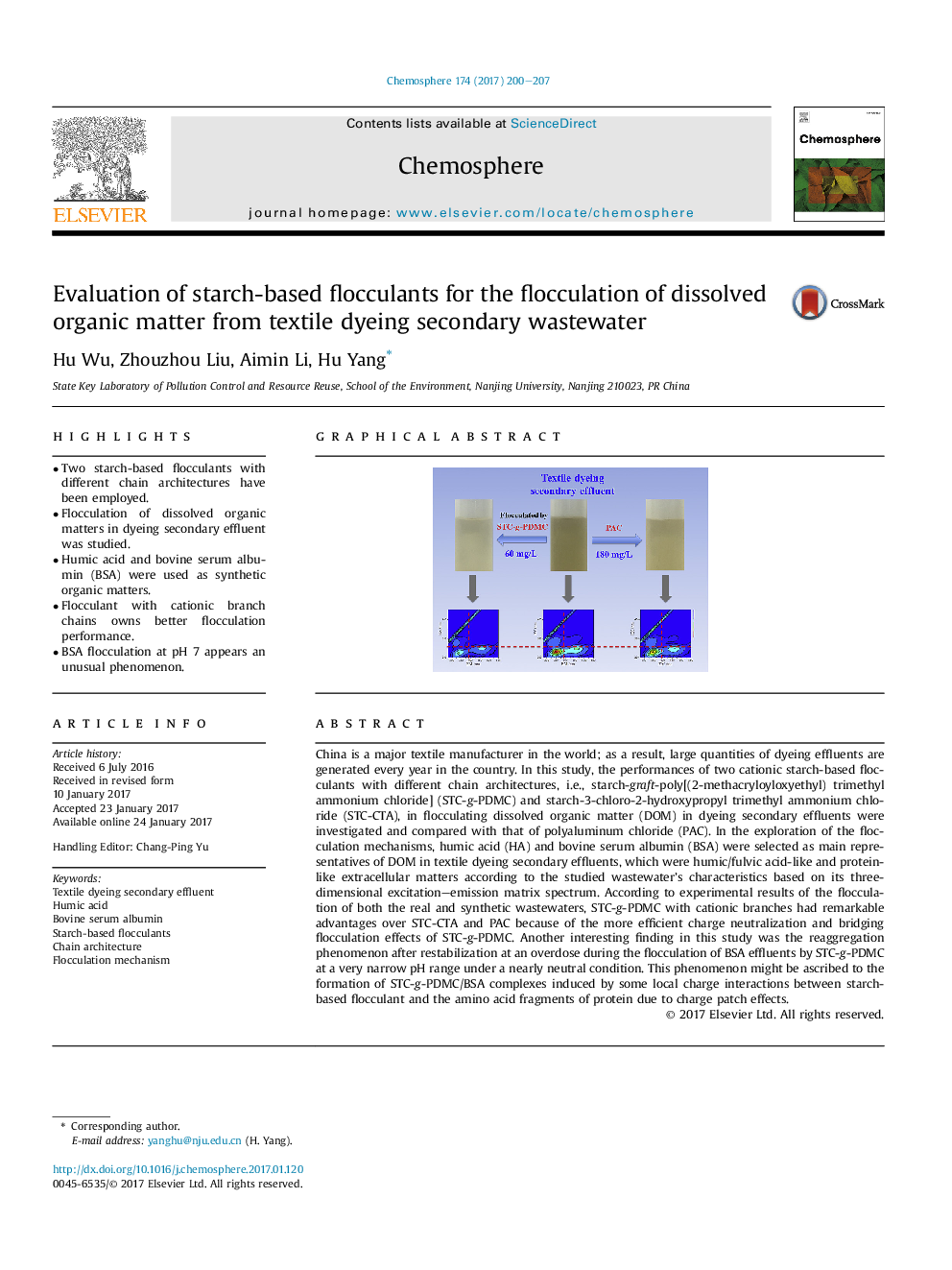| کد مقاله | کد نشریه | سال انتشار | مقاله انگلیسی | نسخه تمام متن |
|---|---|---|---|---|
| 5747294 | 1618797 | 2017 | 8 صفحه PDF | دانلود رایگان |
- Two starch-based flocculants with different chain architectures have been employed.
- Flocculation of dissolved organic matters in dyeing secondary effluent was studied.
- Humic acid and bovine serum albumin (BSA) were used as synthetic organic matters.
- Flocculant with cationic branch chains owns better flocculation performance.
- BSA flocculation at pH 7 appears an unusual phenomenon.
China is a major textile manufacturer in the world; as a result, large quantities of dyeing effluents are generated every year in the country. In this study, the performances of two cationic starch-based flocculants with different chain architectures, i.e., starch-graft-poly[(2-methacryloyloxyethyl) trimethyl ammonium chloride] (STC-g-PDMC) and starch-3-chloro-2-hydroxypropyl trimethyl ammonium chloride (STC-CTA), in flocculating dissolved organic matter (DOM) in dyeing secondary effluents were investigated and compared with that of polyaluminum chloride (PAC). In the exploration of the flocculation mechanisms, humic acid (HA) and bovine serum albumin (BSA) were selected as main representatives of DOM in textile dyeing secondary effluents, which were humic/fulvic acid-like and protein-like extracellular matters according to the studied wastewater's characteristics based on its three-dimensional excitation-emission matrix spectrum. According to experimental results of the flocculation of both the real and synthetic wastewaters, STC-g-PDMC with cationic branches had remarkable advantages over STC-CTA and PAC because of the more efficient charge neutralization and bridging flocculation effects of STC-g-PDMC. Another interesting finding in this study was the reaggregation phenomenon after restabilization at an overdose during the flocculation of BSA effluents by STC-g-PDMC at a very narrow pH range under a nearly neutral condition. This phenomenon might be ascribed to the formation of STC-g-PDMC/BSA complexes induced by some local charge interactions between starch-based flocculant and the amino acid fragments of protein due to charge patch effects.
170
Journal: Chemosphere - Volume 174, May 2017, Pages 200-207
